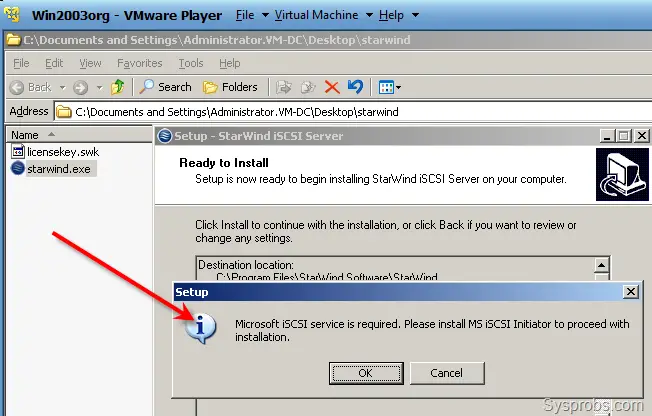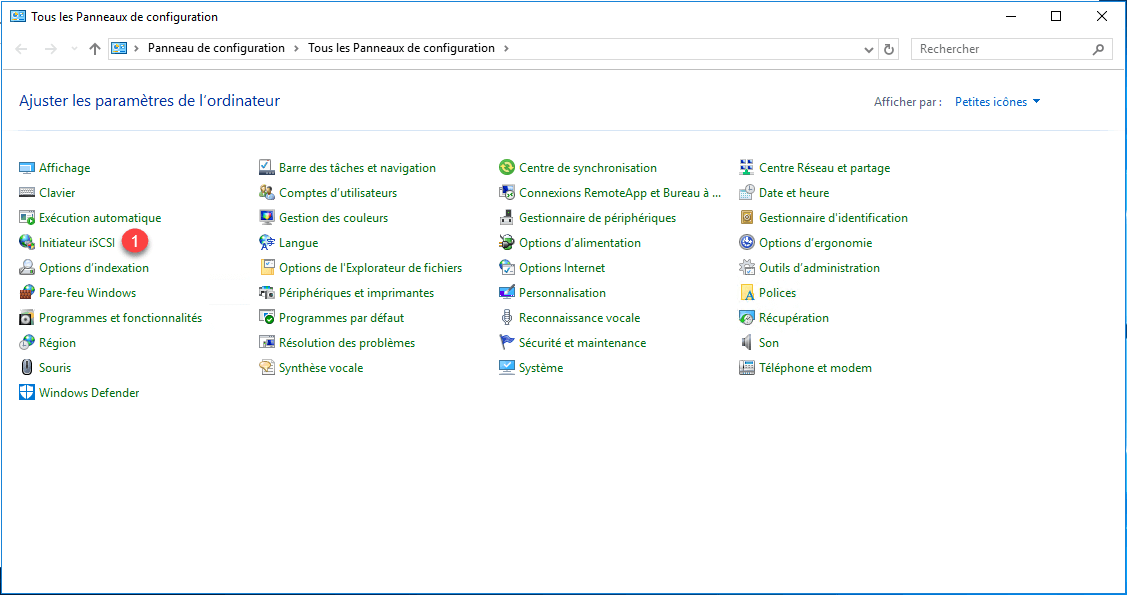

- #Starwind iscsi target full version#
- #Starwind iscsi target install#
- #Starwind iscsi target software#
- #Starwind iscsi target free#

I have 8 SATA drives and 1 iSCSI target (Nas4Free). I have two licenses of DrivePool, one CloudDrive and two Scanner installs. In fact, the same performance numbers are achieved without the server-side caching functionality.I've been trying to organize my CloudDrive and Drivepool among my servers and struck upon what I thought was a good solution. The new MS product is just as fast as StarWind's product and has support for a myriad of features that didn't exist previously such as DeDupe, iSCSI Boot and more.
#Starwind iscsi target free#
I'm running comparisons now between StarWind iSCSI SAN & NAS Free V6 vs Microsoft 2012 R2 iSCSI Target Server. This article is outdated and doesn't apply anymore.
#Starwind iscsi target software#
Categories Software Based Storage Tags iSCSI, Storage Post navigation In part 2 I will see if these results will scale with multiple server VM workloads – and also how effective the StarWind deduplication engine is. IOMeter clearly shows a 10X improvement in performance – these results will need to be verified with a heavier load, but I can only imagine that more RAM and faster base storage disks will only improve these results. The results while using the Microsoft software target: It will be interesting to see if this performance scales with more VMs (containing similar blocks – in the kernel, etc) and with more RAM in the iSCSI server. This test may be a bit one sided due to the fact that this test VM is the only running on this datastore, and thus the entire IOMeter test file is likely coming from the RAM cache. Here is the configuration used for the tests: Same story with CPU use and allocated RAM: The resources in use by the iSCSI server clearly show this: Immediately, it was obvious that the installation was going much slower than with the StarWind target software. A 60GB LUN was presented to ESXi – and OS installation began (the VM was created with the same specs). The Starwind software was uninstalled and the Microsoft target software installed in its place. The high speed cache feature is very clearly a factor as it allocates the RAM immediately, and the CPU load is all from the StarWind process: During the install, the iSCSI server was clearly using most of its resources for iSCSI operations – the single 1GbE link was saturated at 95%: First impressions: OS installation is very quick – I did not time it, but it was remarkably quick. The StarWind target was installed, and a virtual volume presented over iSCSI – 60GB, with deduplication turned on and a 1.5GB cache enabled.

20GB system volume – *Thick provisioned, eager zeroed.60 GB iSCSI LUN presented from standalone 80GB 7200RPM SATA disk.Whitebox Intel Xeon 5160 Dual Core 3.0GHz.All network traffic is carried on a Catalyst 2970G switch, on the native VLAN with all other traffic – this is not an optimal configuration, but I want to start with the basics and try to improve performance from there. I first want to compare both solutions side by side – first testing general OS performance, then more specialized workloads, etc.
#Starwind iscsi target full version#
The pay versions add multiple server support, HA mirroring, and failover – the full version comparison can be found here. The free-for-home-use version is becoming very feature rich – features include thin provisioning, high speed cache, and block level deduplication. They have had a software target solution around for quite some time – the current release version is 5.8. Then, in April of 2011, Microsoft released the iSCSI target software installer to the public ( in this blog post).Įnter Starwind.
#Starwind iscsi target install#
Windows Storage Server 2008 R2 was different – it was released as an installable package to any Server 2008 R2 install – but again, it was available through Technet. When Windows Storage Server 2008 was released, it was also included in Technet subscriptions making it readily available for businesses and home users to test and validate. Microsoft’s iSCSI target software was originally part of the Windows Storage Server SKU and only available to OEMs. What is the answer? Turn an everyday server into an iSCSI storage server using iSCSI software target software. Unfortunately, standard high performance SANs carry with them a hefty price tag and a massive administrative overhead – so an EMC or NetApp filer is often out of the question. *NEW* StarWind V8 is here!! and it looks VERY promising!!įor some small to medium sized businesses and even some home power users, shared storage is a must-have.


 0 kommentar(er)
0 kommentar(er)
